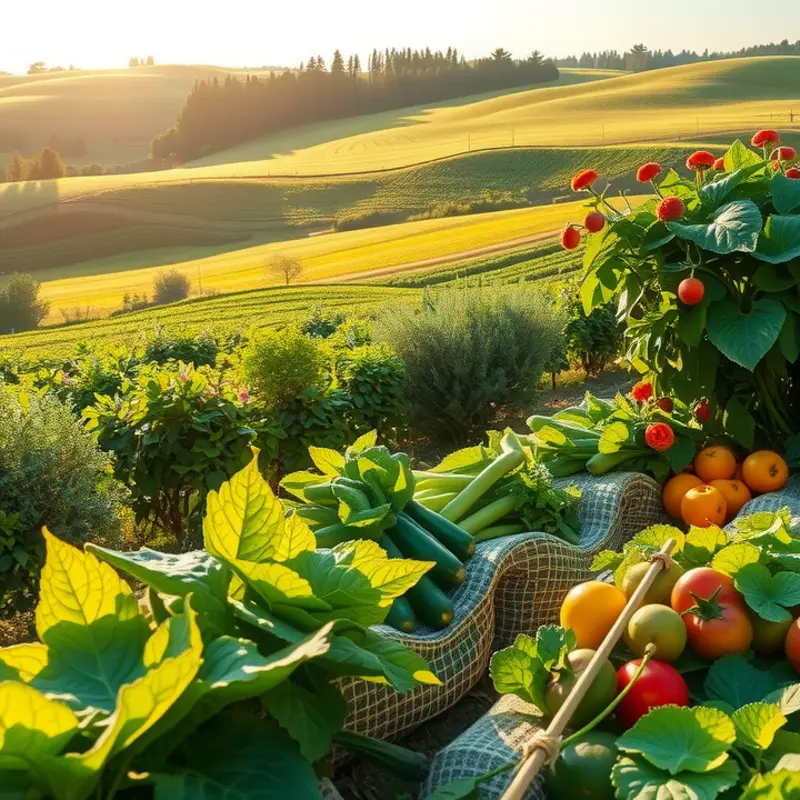Understanding how to maintain safe food temperatures is crucial for preventing foodborne illnesses and reducing waste in the kitchen. This involves knowing the right temperatures for cooking, cooling, and storing food, as well as the best practices for food management at home. By following these guidelines, you can ensure food safety while also minimizing unnecessary waste and enhancing your overall culinary experience.
Understanding Safe Temperature Zones

Ensuring the safety and quality of your food hinges on maintaining it at the right temperatures. Understanding safe temperature zones is crucial for preserving your meals and minimizing waste. Whether cooking, cooling, or storing, each phase requires attention to specific temperature ranges to avoid spoilage and contamination.
The Danger Zone
First, it’s important to grasp the risks associated with the ‘danger zone.’ This is the temperature range between 40°F (4°C) and 140°F (60°C) where bacteria such as Salmonella and E. coli thrive. Food left in this zone for more than two hours can become unsafe to consume, leading to foodborne illnesses. It is essential to minimize food exposure to these temperatures, particularly during preparation and serving.
Cooking Temperatures
Different foods require specific internal cooking temperatures to ensure safety. Poultry, for example, should reach at least 165°F (74°C). Ground meats, like beef and pork, should be cooked to 160°F (71°C). Roasts, steaks, and chops have a slightly lower requirement, needing a minimum of 145°F (63°C). When cooking, employing a food thermometer is a failsafe method to check these temperatures, ensuring that your meals are not just tasty but safe.
Cooling and Storing
Once cooked, food should be cooled as soon as possible. Proper cooling prevents bacteria from thriving. Refrigerators should be set below 40°F (4°C) to keep perishables safe. In contrast, freezers should be at 0°F (-18°C) for optimal storage of long-term food items. Invest in a refrigerator thermometer if your appliance doesn’t have a built-in thermostat.
To cool food quickly, divide large amounts into smaller portions and use shallow containers. This increases the dissipation of heat and brings the food out of the danger zone quicker. Additionally, leaving space between stored items in the refrigerator ensures proper air circulation.
Practical Tips
Regularly check and calibrate your kitchen thermometers to maintain accuracy. It’s a small step that drastically affects your food safety protocols. You can learn more about implementing eco-smart kitchen storage by visiting this guide, which provides further insight into maintaining an energy-efficient and safe kitchen environment.
Remember, understanding these temperature zones is not only about avoiding illness but also about preserving the quality and flavor of your food. By consistently monitoring and adjusting how you manage cooking and storage temperatures, you can contribute to both safety and sustainability in your kitchen.
Practical Techniques for Food Storage

Storing your food effectively is a cornerstone of kitchen management, maximizing freshness and minimizing waste. Start by choosing the right containers. Opt for airtight, transparent containers which allow easy visibility and prevent contamination. Glass and food-safe plastics work well for both the fridge and pantry.
Labeling your containers is crucial. Always include the item name and storage date, using waterproof markers or labels. This helps track freshness and avoids the waste of forgotten items languishing at the back of your refrigerator.
Using your freezer efficiently can be transformative for food preservation. Ensure you store items in small, flat packages to optimize space and freeze them quickly, preserving quality. Flash freezing individual items, like berries or meatballs, on a tray before bagging them prevents clumps, allowing you to use just what you need later.
Managing leftovers properly prevents waste and keeps your meals interesting. Store them in single-serving containers for quick meals or lunches, and consume within three to four days. Consider a weekly ‘clean-out-the-fridge’ night to creatively use leftover ingredients.
Understanding expiration dates is equally vital. Differentiate between “best before,” which indicates peak quality, and “use by,” which relates to safety. Evaluate the food’s appearance and smell before deciding to consume, especially if it’s past the “best before” date.
Implementing a rotating food inventory is an advanced technique to reduce spoilage. Organize your fridge and pantry shelves by placing older items at the front. This encourages using them first. Take inspiration from low-waste cooking preparation ideas to align your meal prep with available and aging items, further reducing waste.
Finally, consider a digital or physical inventory list. Regularly update it to track what you have and what needs to be used soon. This practice aids in planning meals and grocery shopping, ensuring continuously fresh supplies.
By incorporating these strategies, you can enhance the longevity of your food products, contribute to sustainability efforts, and make your kitchen a more efficient and inviting space.
Final words
Maintaining safe food temperatures is not only vital for food safety but also plays a key role in reducing waste in your home. By understanding temperature zones, correctly storing food, and using practical techniques, you can enjoy fresh meals while ensuring that your food lasts longer. Prioritizing food safety means healthier meals for you and your family, along with the added benefit of saving money through minimized waste. Start implementing these tips today and transform your kitchen management!







